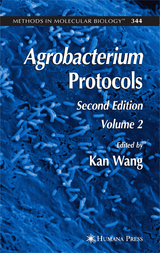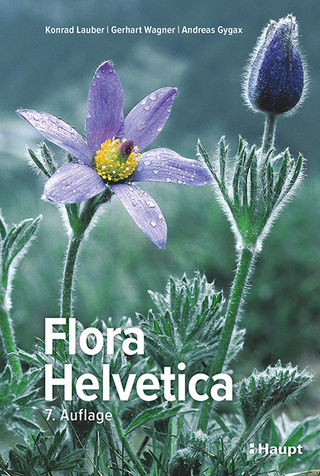Agrobacterium Protocols
Humana Press Inc. (Verlag)
978-1-58829-843-0 (ISBN)
Root Plants.- Carrot (Daucus carota L.).- Cassava (Manihot esculenta Crantz).- Potato (Solanum tuberosum L.).- Sweet Potato [Ipomoea batatas (L.) Lam.].- Turf Grasses.- Bermudagrass (Cynodon spp.).- Perennial Ryegrass (Lolium perenne L.).- Switchgrass (Panicum virgatum L.).- Tall Fescue (Festuca arundinacea Schreb.).- Turf Grasses.- Woody Species.- American Elm (Ulmus americana).- Cork Oak Trees (Quercus suber L.).- Eucalyptus.- Pine (Pinus radiata).- Poplar (Populus spp.).- Rubber Tree (Hevea brasiliensis Muell. Arg).- Tropic Plants.- Banana (Musa sp.).- Citrus.- Coffee (Coffea sp.).- Papaya (Carica papaya L.).- Pineapple [Ananas comosus (L.) Merr.].- Sugarcane (Saccharum spp.).- Nuts and Fruits.- American Chestnut [Castanea dentata (Marsh.) Borkh.].- Apple (Malus × domestica).- Blueberry (Vaccinium corymbosum L.).- Grapevine (Vitis vinifera L.).- Strawberry (Fragaria × ananassa).- Walnut (Juglans).- Ornamental Plants.- Carnation (Dianthus caryophylus L.).- Chrysanthemum (Dendranthema × grandiflora).- Orchids (Cymbidium spp., Oncidium, and Phalaenopsis).- Petunia (Petunia hybrida).- Rose (Rosa hybrida L.).- Medicinal Plants.- Ginseng (Panax ginseng).- Hemp (Cannabis sativa L.).- Opium Poppy (Papaver somniferum).- Non-Plants.- Actinomycetes (Streptomyces lividans).- Filamentous Fungi (Magnaporthe grisea and Fusarium oxysporum).- Green Alga (Chlamydomonas reinhardtii).- Mammalian Cells.- Mushroom (Agaricus bisporus).- Yeast (Saccharomyces cerevisiae).
| Erscheint lt. Verlag | 1.9.2006 |
|---|---|
| Reihe/Serie | Methods in Molecular Biology ; 344 |
| Zusatzinfo | 6 Illustrations, color; 81 Illustrations, black and white; 512 p. 87 illus., 6 illus. in color. |
| Verlagsort | Totowa, NJ |
| Sprache | englisch |
| Maße | 155 x 235 mm |
| Themenwelt | Naturwissenschaften ► Biologie ► Botanik |
| Naturwissenschaften ► Biologie ► Genetik / Molekularbiologie | |
| Naturwissenschaften ► Biologie ► Zellbiologie | |
| ISBN-10 | 1-58829-843-4 / 1588298434 |
| ISBN-13 | 978-1-58829-843-0 / 9781588298430 |
| Zustand | Neuware |
| Haben Sie eine Frage zum Produkt? |
aus dem Bereich




